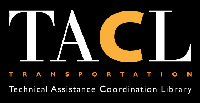Transportation is a key and a barrier to economic mobility in communities across the United States. Communities with robust transit systems help people access jobs and services at affordable costs. In rural and suburban areas, many people see privately owned cars as the most practical means of transportation due to land use patterns and low population density. As a result, rural transit systems often lack the density and demand to efficiently carry significant proportions of their population. This is seen when peoples’ homes or places of employment are not within walking distance of a fixed bus route and headways between buses exceed one hour. This paradigm creates a cycle that often harms those residents most in need of public transit and shared mobility. For example, older adults with mobility impairments often use significant blocks of time to plan and travel to or from medical appointments and other errands using fixed-route buses or dial-a-ride services. People recovering from drug addiction frequently cannot rely on transit to reliably take them to treatment, legal appointments, and places of employment; in fact, the lack of adequate transportation options is a barrier to recovery from addiction. Cecil Transit in northeastern Maryland has experienced this scenario where transit services are constrained. Like many rural communities across the United States, Cecil County has an aging population, a large warehousing industry, and high rates of people addicted to opioids. Coinciding with the need to reinvent its public transportation offerings, Cecil Transit has piloted a new mobility on-demand (MOD) service, called COMPASS, that serves residents living in addiction recovery houses. Cecil Transit successfully applied for an Integrated Mobility Innovation (IMI) grant from the Federal Transit Administration (FTA) to pilot this targeted microtransit solution and has partnered with recovery houses, transportation and technology vendors, and other agencies to implement and evaluate this project. This case study explores aspects of this pilot and highlights some best practices for peer communities looking to pilot mobility solutions serving targeted populations.
Source: https://learn.sharedusemobilitycenter.org/casestudy/using-compass-to-navigate-cecil-county-md/
TA Centers: SUMC
Terms: Demand responsive transportation, Equity, Evaluation, Fleet management, Marketing, Mobile applications, Paratransit services, Performance measurement, Public private partnerships, Ridesourcing, Rural transit
Tags: community engagement, demand response, demand responsive, engagement, equity, evaluation, fare, fares, fees, fleet management, flexible transit, integration, marketing, microtransit, mobile applications, mobile apps, paratransit, payment integration, performance, performance metrics, pilot projects, pilots, point-to-point, public-private partnerships, ridesourcing, ridesplitting, rural, TNC, TNCs, transportation network companies, WAV, WAVs, wheelchair accessible vehicles

